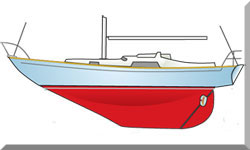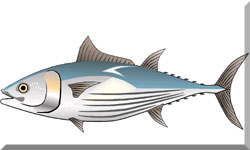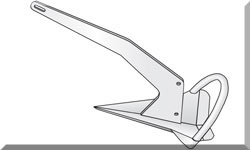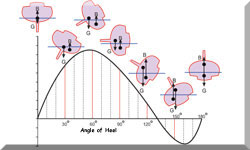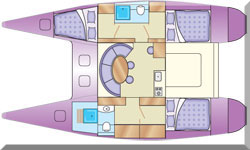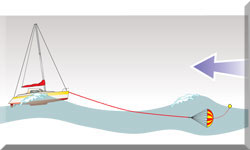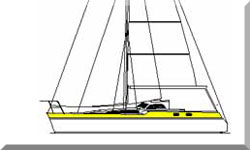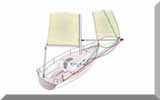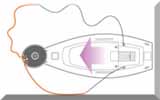- Home
- J Boats
J Boats: Performance & Practicality for Today's Sailor
For over four decades, J Boats has been a name synonymous with accessible performance and thoughtful design in the sailing world. Picture this: a company that consistently delivers sailboats thrilling on the racecourse yet remarkably user-friendly for the recreational sailor. That's J Boats!
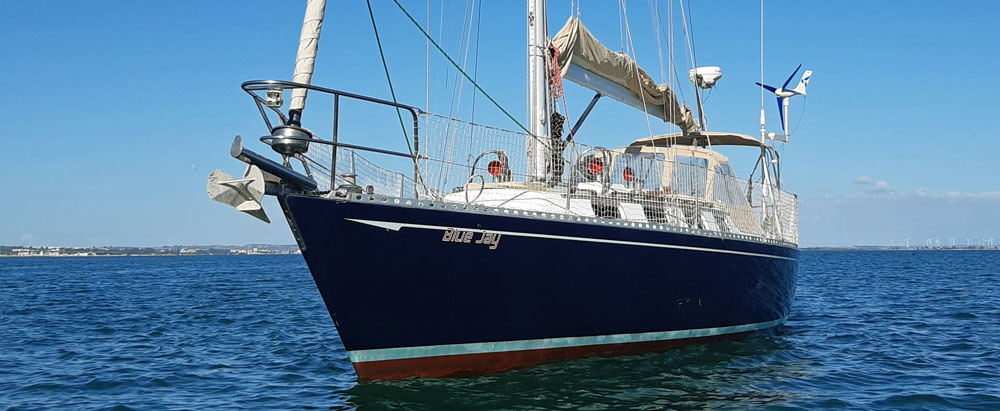 J/40
J/40Table of Contents
- A Family Affair: The Genesis & Evolution of J Boats
- The Art of the Accessible Performer: Design Philosophy
- Built for the Long Haul: Construction & Quality
- A Fleet of Champions: Model Range & Evolution
- The Joy of the Sail: Performance & Onboard Experience
- A Lasting Impression: Market Position & Legacy
- Addressing the Niggles: Challenges & Criticisms
- The Johnstone Spirit: Beyond the Boats
- Summary
This isn't a saga of extravagant, inaccessible yachts. Instead, it's a testament to smart engineering, a clear vision, and a deep understanding of what sailors truly value in their vessels. If your research has led you to J Boats, chances are you're seeking that elusive blend of speed, nimble handling, and genuine comfort.
A Family Affair: The Genesis & Evolution of J Boats
The J Boats story kicked off in 1977, not in some sprawling shipyard, but in Rod Johnstone’s garage in Stonington, Connecticut. Rod, a designer who honed his craft through a correspondence course from the Westlawn School of Yacht Design, simply wanted to build a sailboat for his own family. "Ragtime," a 24-foot design, was the fruit of his labor, and it immediately turned heads on the racecourse back in '76. That success caught the eye of Everett Pearson, a co-founder of Pearson Yachts and owner of TPI Composites, Inc.
Soon, an agreement was struck: TPI would produce Rod's design – now christened the J/24 – and Rod's brother, Bob Johnstone, would jump aboard to handle marketing and sales, investing a modest $20,000 to get things rolling. Just like that, J/Boats came to life, setting up shop in Newport, Rhode Island, with a distinct model focusing purely on design and marketing, leaving the heavy lifting of production to TPI Composites.
Initial projections were modest at best, but the J/24 exploded onto the scene, selling an astounding 750 boats in its first year, wildly exceeding the expected 250. This immediate, runaway success firmly established J Boats as a serious contender in the sailboat market. The family tradition continued when a new generation of Johnstones took the helm in 1992.
Rod's son, Jeff Johnstone, stepped up as president, while Alan Johnstone took on the critical role of vice-president and chief designer. Other family members, too, have played various roles, ensuring that this strong familial presence and unwavering passion for sailing remain the driving force. Today, J Boats remains a prominent builder of fiberglass sailboats, offering a diverse product line, from the zippy J/70 to the refined J/45.
The Art of the Accessible Performer: Design Philosophy
The Art of the Accessible Performer: Design Philosophy
At its heart, the J Boats design philosophy boils down to a clear, singular goal: craft boats that are thrilling under sail, yet remain straightforward and forgiving enough for a wide spectrum of sailors. Forget extreme racing machines or overly ponderous cruising yachts. This is about a harmonious blend of spirited performance and practical usability, making them the quintessential racer cruisers.
These designs are largely the brainchild of the Johnstone family. Rod Johnstone laid the initial groundwork, and Alan Johnstone has masterfully continued that legacy as chief designer. Their signature approach quickly becomes apparent through several key characteristics:
- Sloop-Rigged Keelboats: Every J Boats design is a monohull, sloop-rigged keelboat – a configuration celebrated for its efficiency and pure ease of handling.
- Cored Sandwich Fiberglass Construction: This advanced construction method, particularly the SCRIMP (Seemann Composites Resin Infusion Molding Process) system pioneered by TPI, has been a cornerstone of J Boats' legendary build quality. It results in hulls that are remarkably strong, stiff, and surprisingly lightweight.
- Performance-Oriented Hulls: Look closely, and you'll see why J Boats are fast. Their fine entries, moderate beam, and relatively low freeboard all contribute to impressive speed and formidable upwind prowess. While some models might heel a bit more than wider-beamed performance yachts, they’re generally lauded for a comfortable motion even when the seas kick up.
- Retractable Bowsprits & Asymmetrical Spinnakers: This was a game-changer. J Boats led the way in popularizing retractable bowsprits and asymmetrical spinnakers on cruising and club racing boats. This innovation truly revolutionized downwind sailing for many, simplifying it while boosting exhilaration – a standard now widely adopted across the industry.
- Focus on Ergonomics & Short-Handed Sailing: A standout feature of many J Boats designs is their thoughtful layouts, which make single or double-handed sailing a breeze. Deck plans are meticulously laid out, mainsheet systems are efficient, and controls are always within easy reach.
The market for J Boats has always been wonderfully diverse. They appeal to club racers, performance cruisers, and anyone simply looking for a spirited yet manageable sailing experience. These boats aren't just built to compete; they're designed to offer ample comfort for coastal cruising and those cherished extended weekends afloat.
Built for the Long Haul: Construction & Quality
When you talk about a J Boats' construction, you're primarily discussing fiberglass. Their hull, deck, and interior rely heavily on cored sandwich laminates – a true hallmark of their build process. Early on, their collaboration with TPI Composites proved crucial in embracing advanced construction techniques. The SCRIMP process, a vacuum infusion method, ensures an incredibly high-quality laminate with a precise resin-to-fiber ratio, resulting in structures that are not only strong and lightweight but remarkably durable. This method also virtually eliminates voids and guarantees excellent bonding of the core material.
While the very first J/24s occasionally had minor quirks with silicone sealant on hull-to-deck joints and lighter fiberglass on hatches, subsequent J Boats models and continuous refinements swiftly addressed these. The switch to 3M 5200 sealant for hull-to-deck joints, for example, dramatically improved their integrity, and hatches were reinforced. Generally speaking, J Boats have a stellar reputation for solid build quality and impressive longevity, a testament to their smart construction methods and meticulous attention to detail.
A Fleet of Champions: Model Range & Evolution
The J Boats lineage is a fascinating tapestry woven with highly successful and influential models, each one adding another thread to the brand's distinguished reputation.
The Original Icon: J/24
Without a doubt, the J/24 remains the most iconic and wildly successful J Boat ever conceived, with over 5,500 units proudly sailing. Launched in 1977, it swiftly ascended to become the world's most popular one-design keelboat, sparking the creation of a global racing class. Its inherent ease of handling, spirited performance, and surprising affordability made it an instant sensation, effectively democratizing competitive keelboat racing for countless enthusiasts.
Early Successes & Expansion
Riding high on the J/24's wave of popularity, J Boats steadily expanded its impressive lineup. The J/22 (1983) mirrored the J/24's one-design success on a slightly smaller canvas. The J/29 (1982) offered a versatile racer cruiser with options for either fractional or masthead rigs. The J/30 (1979) was crafted with an eye towards offshore racing, striking a fine balance between speed and safety, and the J/35 (1983) proved to be yet another immediate hit on the race circuit.
Pioneering the Sprit-Rig: J/105 & Beyond
The 1990s heralded a significant breakthrough with the introduction of the J/105. This particular model holds the distinction of being the world's first modern sprit-rigged keelboat, a true pioneer in the widespread adoption of retractable bowsprits and asymmetrical spinnakers. This ingenious design fundamentally reshaped downwind sailing for countless recreational sailors, making it both simpler and far more exhilarating. Its influence, in fact, is still clearly visible across the entire industry today. Unsurprisingly, the J/105 quickly blossomed into an incredibly popular one-design class.
The J/40: A Proven Offshore Performer
Unveiled in 1989 and designed by Rod Johnstone, the J/40 wasted no time establishing itself as a remarkably versatile and popular offshore cruiser-racer. With more than 100 hulls built, it easily became one of J Boats' most celebrated designs in the larger boat category. The J/40 earned widespread acclaim for its uncanny ability to deliver excellent performance, whether tearing up the racecourse or simply cruising quietly, all while remaining surprisingly easy for a couple or small family to manage. It boasted a deep, secure cockpit, a beautifully balanced sail plan, and a comfortable motion in a seaway, rendering it perfectly suited for long passages and challenging offshore conditions.
Its interior layout typically featured two double cabins, a spacious saloon, and a highly functional galley—all thoughtfully designed for practical living aboard. Good headroom and ample storage were also part of the package. Early J/40s relied on conventional hand-laid fiberglass construction with a balsa core, a standard practice for its era. Owners consistently laud the J/40 for its robust construction, impressive speed, and surprisingly comfortable accommodations, making it a highly sought-after used J Boats model for those seeking that ideal blend of cruising comfort and thrilling performance capabilities.
The J/46: A Refined Cruiser-Racer
Among the larger J Boats models, the J/46 (first hitting the water in 1995, with around 35 units produced through 2003) truly shines as a sophisticated performance cruiser. Also designed by Rod Johnstone, it leveraged the proven hull shape of the successful J/44, an offshore classic in its own right. However, the J/46 added a crucial foot of sailing length for enhanced speed and a convenient transom swim/boarding platform.
Crucially, the J/46 benefited from the advanced SCRIMP resin-infused composite construction, delivering superior strength and a significantly lighter build compared to the J/44's older balsa-cored method. You'll often find it equipped with a carbon fiber mast, a detail that further boosts stability and performance, along with a low Vertical Center of Gravity (VCG) shoal draft keel, though deeper keel versions were also available.
The J/46 was explicitly designed for effortless short-handed sailing, capable of achieving impressive 8-knot passage-making speeds under sail with just two people. Its interior, frequently featuring exquisite varnished cherry or teak joinery, is consistently praised for its elegance and practical layout, offering comfortable living spaces for extended cruising with its typical two staterooms and two heads. The J/46 justly earned accolades, including being selected for SAIL Magazine's Top Ten and crowned Sailing World's Boat-of-the-Year in 2000, all testaments to its exceptional J Boats design and meticulous construction.
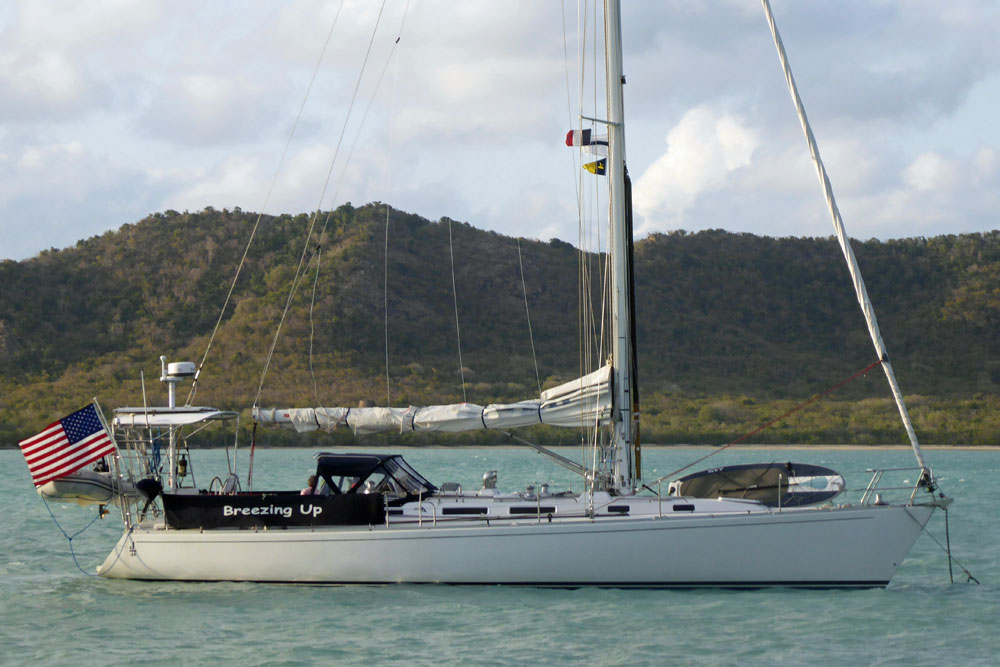 J/46
J/46Performance Cruisers & Racer-Cruisers (Continued)
Other highly regarded J Boats models, celebrated for their balanced performance, superb handling, and consistent success in both offshore and inshore racing, include the J/109, J/111, and J/112E. For those leaning more towards performance cruising, the J/120 and J/122 remain popular choices, widely recognized for their inherent seaworthiness and remarkable versatility.
Modern Offerings
J Boats certainly isn't resting on its laurels; it continuously evolves its designs. Among its current production models is the phenomenally popular J/70, launched in 2012, which rapidly became the fastest-growing one-design class globally. It's adored for its exhilarating planing performance and accessibility for club racers. Other contemporary offerings include the J/36 and the new J/45, both of which refine that crucial balance between offshore speed, comfort, and sheer ease of handling. These newer designs notably showcase increased stability and more generous interior volume compared to earlier models of similar size.
The Joy of the Sail: Performance & Onboard Experience
It's simple: J Boats are celebrated for their lively, responsive, and utterly rewarding sailing characteristics. Often dubbed "sailor's boats," they offer excellent feedback at the helm, making every sail a true pleasure. Their relatively light displacement (for their size) combined with highly efficient keel and rudder designs means they literally leap out of the blocks, accelerating quickly and performing brilliantly across a wide spectrum of conditions.
While their racing prowess and spirited performance are widely known, it might surprise some just how capable many J Boats are offshore. Models like the J/40, J/42, J/46, J/120, and J/122 are proven seaworthy vessels, perfectly capable of handling extended passages. Of course, it’s worth noting that lighter displacement boats, while undeniably fast, might demand a bit more active management in truly heavy weather compared to their heavier, full-keeled cruising counterparts. Yet, they often arrive at their destination significantly faster! Their racing success, let's be clear, is undeniable; J Boats consistently dominate one-design classes and have racked up countless victories in handicap racing globally.
In terms of interior layout and comfort, J Boats have certainly come a long way. While earlier models perhaps prioritized performance with more utilitarian interiors, newer designs – particularly within their "Elegance" line and larger models like the J/45 – place a much greater emphasis on comfort and refined aesthetics. The general interior aesthetic leans towards a clean, modern look, often with abundant natural light flooding the cabins. Interior designer Isabelle Racoupeau, for instance, has lent her talents to the more recent J/45, focusing intently on maximizing comfort and infusing elegance into the onboard experience. Expect well-appointed galleys, comfortable cabin configurations, and a strong focus on practical, livable spaces for extended cruising.
A Lasting Impression: Market Position & Legacy
J Boats occupies a unique and undeniably respected position in the sailing market. Their core demographic typically includes seasoned sailors who genuinely appreciate stellar performance, the thrill of strong one-design racing, and well-built yachts that consistently deliver a rewarding sailing experience. The brand rightly enjoys a stellar reputation for producing high-quality, genuinely fun-to-sail boats that, crucially, hold their value exceptionally well on the used J Boats market. This robust resale value isn't just luck; it's a direct testament to their enduring appeal and the perceived quality they consistently deliver.
The J Boats community itself is vibrant and incredibly active. Countless J/Owner associations and fleets span the globe, fostering a powerful sense of camaraderie and providing abundant opportunities for both competitive racing events and relaxed cruising gatherings. Beyond that, J Boats owners benefit from dedicated online resources, offering valuable technical information, performance data, and general tips specific to various models.
The true, enduring legacy of J Boats lies in their remarkable ability to seamlessly bridge the gap between pure racing machines and genuinely comfortable cruising yachts. They've consistently delivered boats that are fiercely competitive and undeniably exciting, yet remain remarkably easy for a couple or family to handle. Their pioneering use of retractable bowsprits and asymmetrical spinnakers, coupled with their unwavering commitment to high-quality composite construction, has left an indelible mark on sailboat design and construction right across the industry.
Addressing the Niggles: Challenges & Criticisms
While deservedly widely praised, no boat builder is without its considerations, and J Boats is no exception. Some common points of discussion or minor criticisms, particularly concerning older models, occasionally surface:
- Initial Build Quirks (Early Models): As previously noted, some very early J/24s had minor issues concerning hull-to-deck joint sealing and a slightly lighter hatch construction. Thankfully, J Boats quickly addressed and rectified these in subsequent models.
- Storage in Lighter Displacement Models: While their lighter displacement is a key contributor to their impressive performance, some critics of certain models (like the J/42, which aimed to be a more cruising-oriented successor to the J/40) have observed that storage space for extensive cruising gear might feel a bit more limited compared to heavier displacement cruising boats.
- Motion in Chop (Lighter Models): It's a trade-off: lighter displacement boats, while fast, can occasionally exhibit a bouncier and noisier motion in truly choppy conditions compared to their heavier counterparts. However, they often make up for it by arriving at their destination considerably faster.
These are generally minor points, often the natural trade-off for the exhilarating performance advantages that J Boats are so celebrated for. The overwhelming consensus, nonetheless, remains resoundingly positive regarding their build quality and exceptional sailing performance.
The Johnstone Spirit: Beyond the Boats
The very essence of J Boats is inextricably linked to the Johnstone family's profound passion for sailing. Rod Johnstone’s initial, simple desire to build a sailboat for his own family perfectly encapsulates the enduring ethos that continues to propel the company: crafting boats that are genuinely enjoyable and accessible for every real sailor. The remarkable synergy between Rod's innate design talent and Bob's sharp marketing acumen proved to be a truly powerful combination.
This deeply rooted familial dedication, now carried forward by the next generation of Johnstones at the helm, has ensured that the original spirit of performance, practicality, and sheer fun remains embedded in the core of every single J Boat. Indeed, countless J Boat owners have embarked on extraordinary voyages, from ambitious circumnavigations to adventurous high-latitude cruising, further cementing the remarkable capabilities and unwavering reliability of these vessels far beyond just the racecourse.
In summary, J Boats stands as a powerful testament to thoughtful sailboat design and robust fiberglass sailboats construction. Their vessels offer an irresistible blend of spirited performance and utterly practical usability, making them a premier choice for recreational sailors and club racers alike. With a formidable legacy forged through innovation and a truly vibrant owner community, a J Boat isn't just a vessel; it’s an open invitation to truly savor the art of sailing.
Summary
In summary, J Boats stands as a powerful testament to thoughtful sailboat design and robust fiberglass sailboats construction. Their vessels offer an irresistible blend of spirited performance and utterly practical usability, making them a premier choice for recreational sailors and club racers alike. With a formidable legacy forged through innovation and a truly vibrant owner community, a J Boat isn't just a vessel; it’s an open invitation to truly savor the art of sailing.
Resources & References
- J/Boats - Wikipedia
- J/40 review: Pinnacle of evolution - Yachting World
- 7 next-generation fast monohulls coming to you this year - Yachting World
- J/42: Get There Fast - Boats.com
- J/24 Used Boat Review - SpinSheet Magazine
- J Owners Resources
- The New J/45 Elegance - Key Yachting
- J/Boats; Sailing to Success: Book Review
- Robert "Bob" LeGrand Johnstone, III - The Sailing Museum & National Sailing Hall of Fame
- J/46 - Sailing Magazine
- Top 10 Best Boats Review: J/45 - McMichael Yacht Yards & Brokers
Recent Articles
-
Optimising Your 12-Volt Boat Fridge for Offshore Sailing & Efficiency
Dec 01, 25 11:05 AM
Master your 12-Volt Boat Fridge system. A guide for experienced sailors covering mechanics, installation, troubleshooting, and advanced electrical efficiency on extended voyages. -
Jonmeri 40: Cruising Specs, Performance Ratios & Review
Nov 30, 25 09:08 AM
An in-depth, expert review of the Jonmeri 40 sailboat. Analyse design philosophy, D/L & CSF ratios, cruising suitability, and common ownership concerns for this Finnish-built, high-performance ocean c… -
Alajuela 48: Review, Specs, & Performance Ratios for Offshore Cruisers
Nov 29, 25 12:46 PM
Detailed analysis of the Alajuela 48 full-keel cruiser, including designer Robert Perry's philosophy, comprehensive specifications, key design ratios (SA/D, D/L, CSF), and suitability for experienced…


